
Piercing the veil
A new exhibition at Buxton Contemporary finds a rich complexity in the shadowy terrain between life and death.
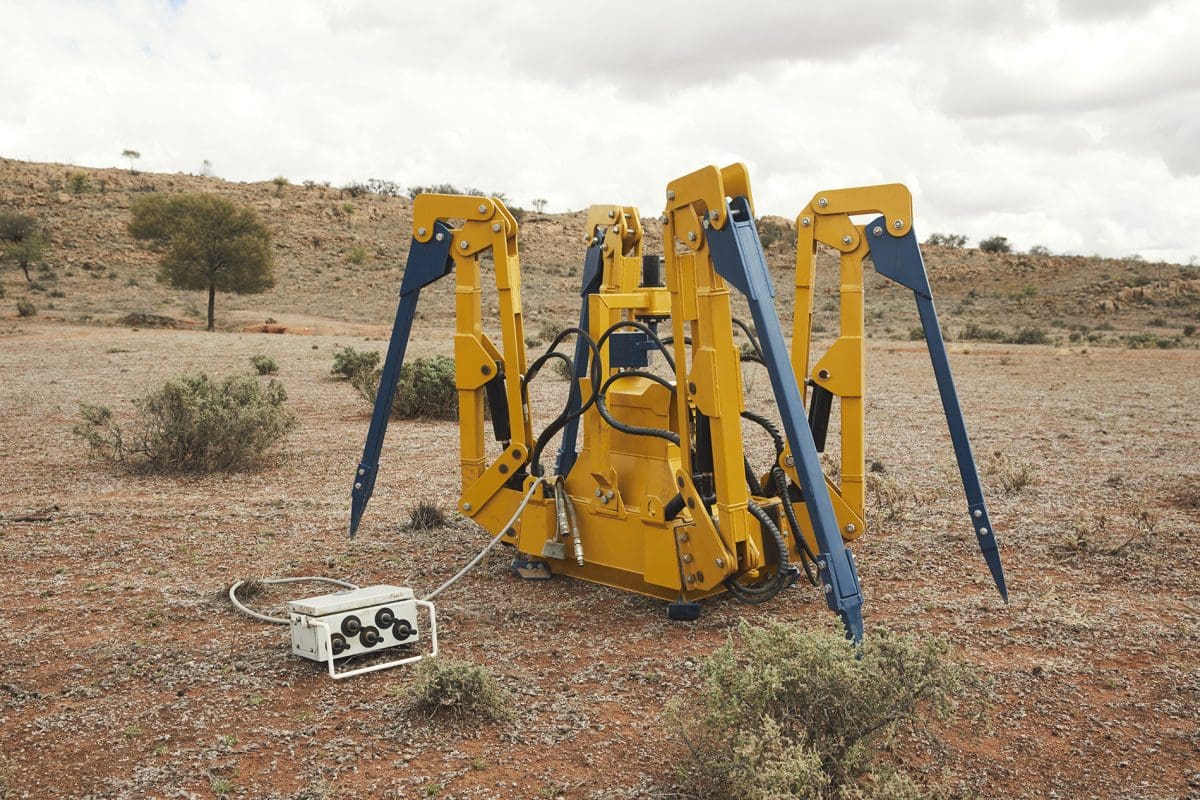
James Capper, HYDRA STEP, 2014. Photo credit: Damian Griffiths. Image courtesy of the artist and the Museum of Old and New Art, Tasmania, Australia.
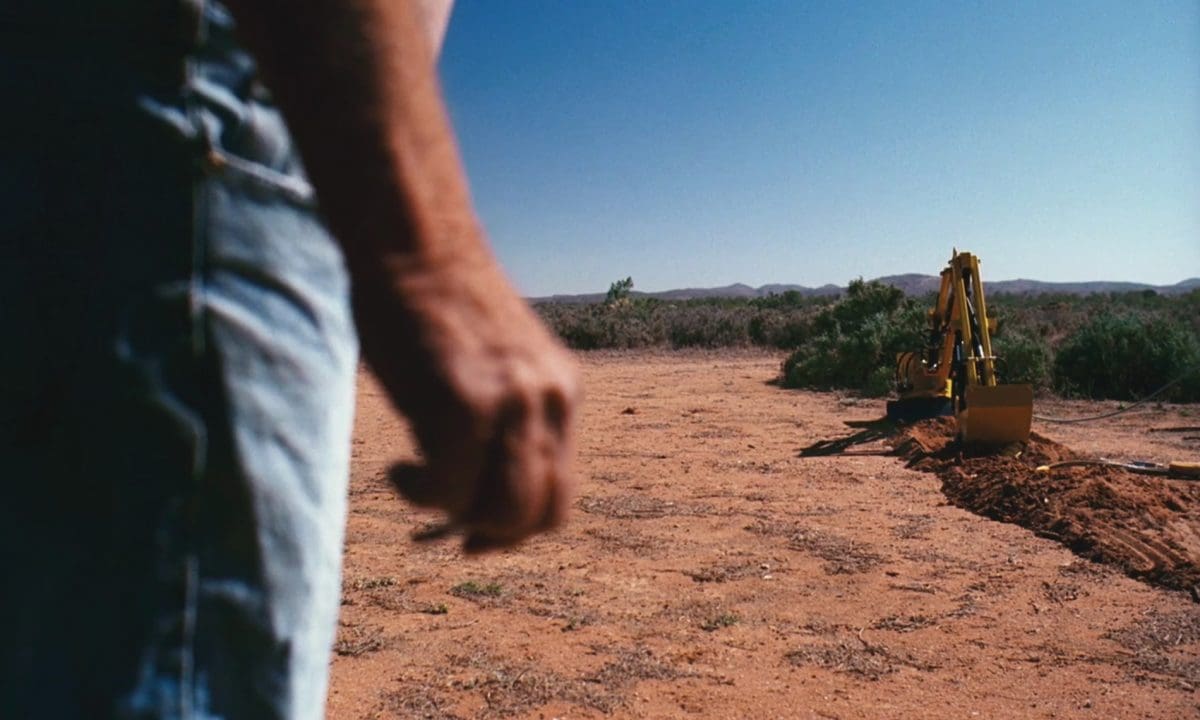
Alexandra George and James Capper, BLUE FRAME (video still), 2017. Image courtesy of the artist and the Museum of Old and New Art, Tasmania, Australia.

Alexandra George and James Capper, BLUE FRAME (video still), 2017. Image courtesy of the artist and the Museum of Old and New Art, Tasmania, Australia.
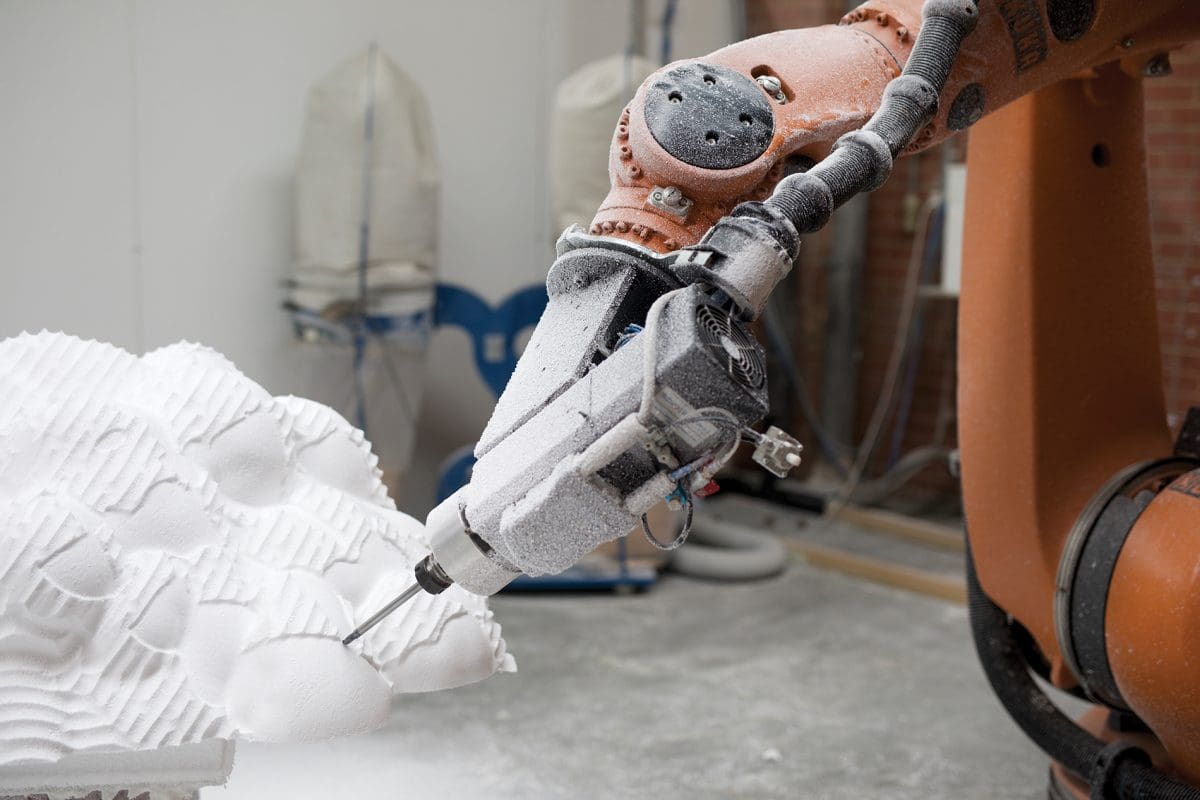
Jean-Luc Moulène, Fixed Zinc, 2021. Photo: Nicholas Burridge. Image courtesy of the artist and Mona, Tasmania, Australia.
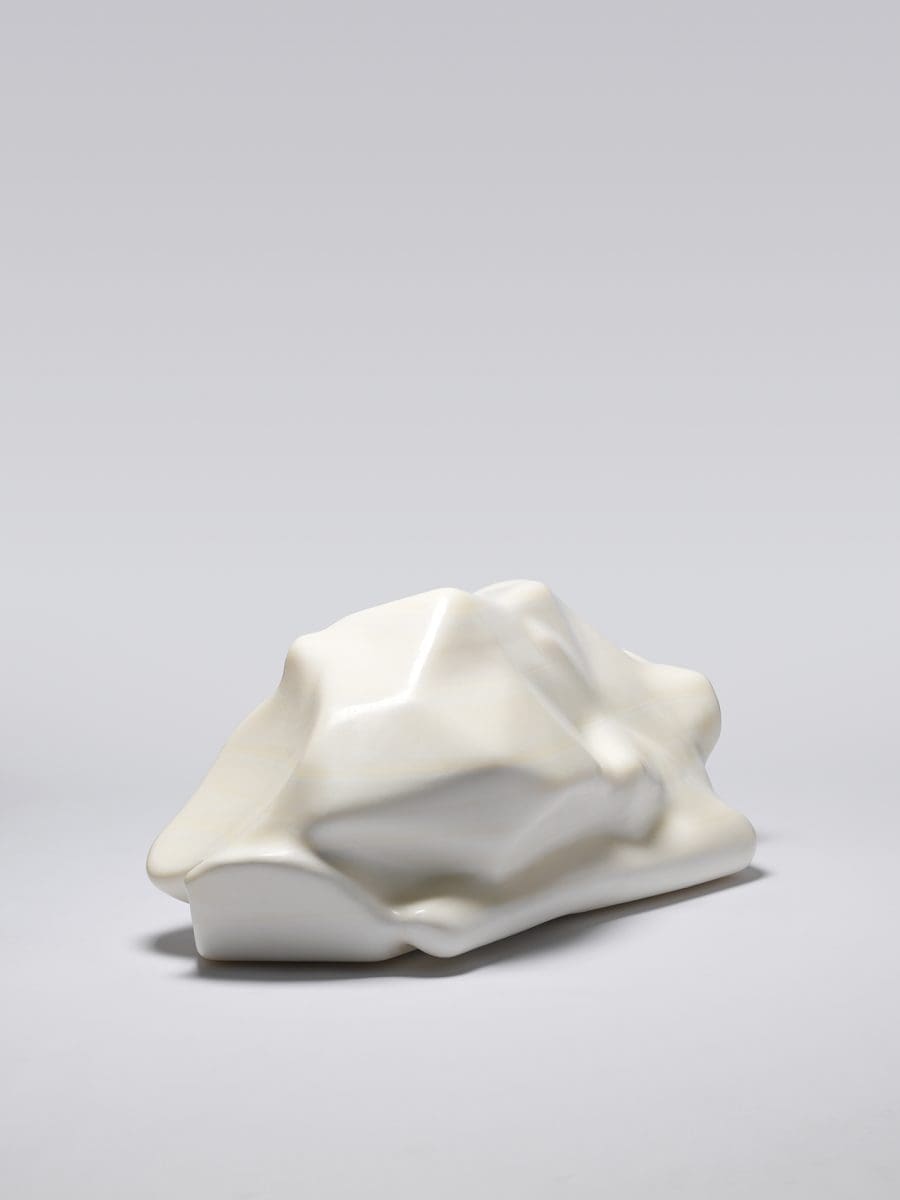
Jean-Luc Moulène, Wax Larva, 2021. Photo: Mona/Jesse Hunniford. Image courtesy of the artist and Mona, Tasmania, Australia.
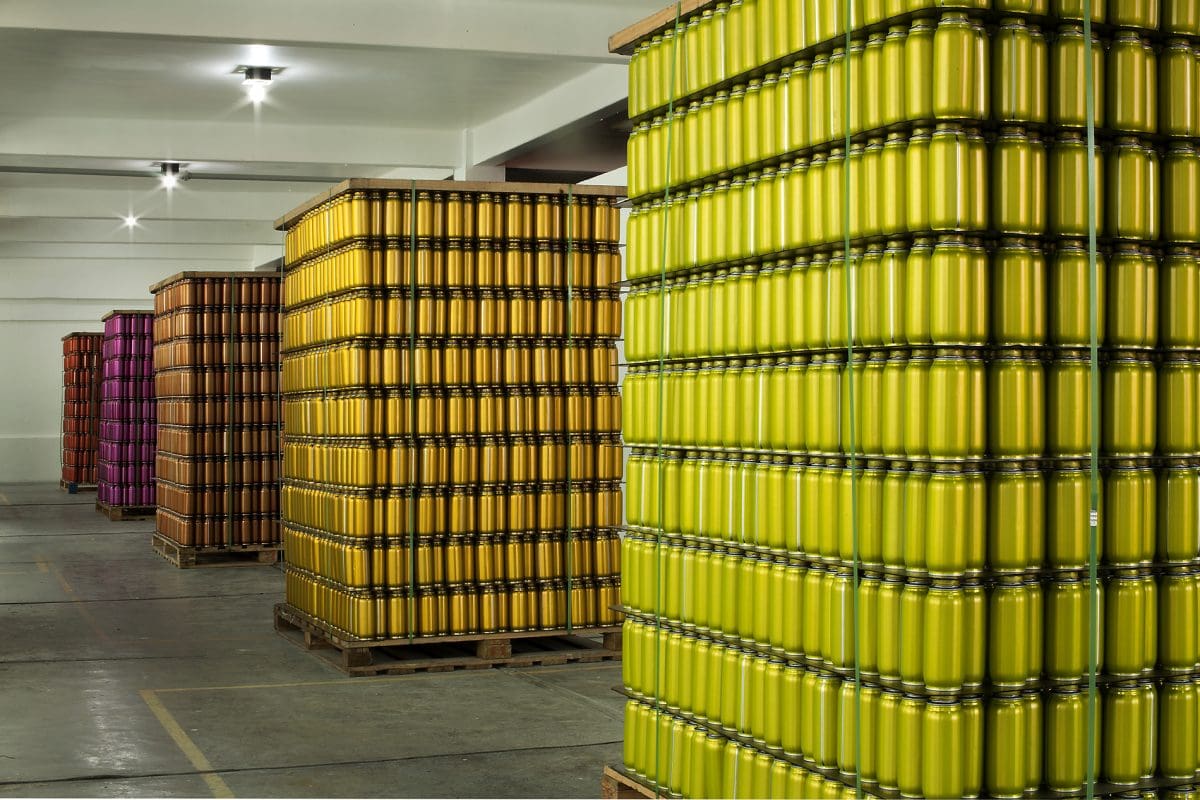
Jean-Luc Moulène, Errata, 2002–2013. Photo: Francisco Kochen. Image courtesy of the artist and Galerie Chantal Crousel, Paris.
James Capper is half engineer and half sculptor. He has one eye on the evolutionary biology of the oldest life forms, and the other on future, preferably green, technology. In London, the UK-based artist recently manufactured walking hydraulic sculptures inspired by insects, each measuring about two by one metres, and shipped them to Art Basel Hong Kong. Here, an idea was hatched: to send them on to Australia to make a hybrid art film.
Broken Hill was deemed the perfect place for director Alexander George to commit the intricate anatomy and strength of these creatures to film. This was especially so given the outback New South Wales town’s rich history of industrial mining processes, on the same continent where fossilised rocks provide evidence of the evolution of vertebrates from sea to land.
Jarrod Rawlins, director of curatorial affairs at Hobart’s Museum of Old and New Art (Mona), where the film and original sculptures will be shown together for the first time, says the film reminds him of Ted Kotcheff’s 1971 psychological Australian masterpiece Wake In Fright. Here, the “Gabba”—Broken Hill—becomes a byword for Australian machismo. “Capper’s film will allow you to see these insects being speculative in the outback,” says Rawlins. “It’s quite beautiful.”
Capper tells me via video conference from his workshop on Old Kent Road, southeast London, that on the downtime from creating the film his team played two-up at a Broken Hill pub, like the schoolteacher character did in Wake in Fright: “It was amazing. There was a big crowd, and people were putting money on the edge, and at the end of the night all these guys from the mine turned up.”
Capper, only 33 years of age, says the inspiration for the film’s aesthetic is more 1980s: think Ridley Scott’s Blade Runner, Steven Spielberg’s ET and Netflix throwback series Stranger Things. “We cast a lot of people: the characters in the film live locally and said they’d like to be involved in it,” he says.
Prior to becoming renowned for his humanoperated machines, Capper says he wasn’t sure if he was an artist or a welder, a sculptor or fabricator, before he was accepted to study at the Chelsea College of Art and Design. So he took a job welding stilts together, and this heavy fabrication work influenced his artistic vision. In his first year studying at Chelsea, he would make industrial sculptures recalling those of artists Anthony Caro and David Smith. “It wasn’t until later on I introduced my full knowledge of engineering into my practice,” he says.
In his second year, he met his future gallerist Hannah Berry, who invited him to be part of a “squat scene”, a group show in a derelict building. In later years, he has had to learn to build relationships with an industrial supply chain, to delegate as well as manufacture works true to his drawings and ideas.
Might casting hydraulic equipment as sculpture in dusk settings give us hope to see extractive technology anew, even a thing of beauty? “We’re in a time of great change,” he says. “Even though these earth-moving machines use the same aesthetic values and colours as their ancestors, they stipulate this evolution into something of the future… Engineering shouldn’t take on a stigma. We live in a time where it’s easier to develop stigmas and distastes for things than seeing where things can go.”
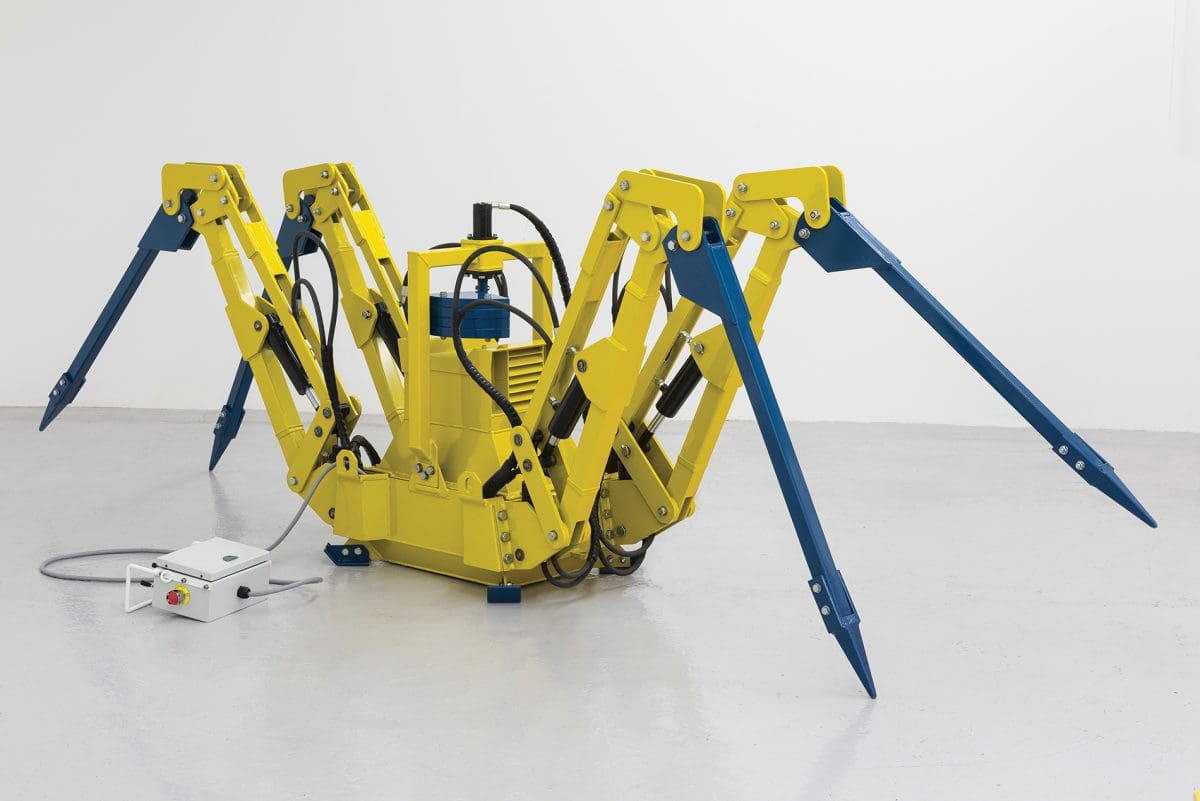
Capper reflects on the recent 2021 United Nations Climate Change Conference in Glasgow, heralding a “revolution in green technology”. He heard an interesting radio interview on the BBC’s HARDtalk program with Australian mining magnate Andrew Forrest, who is now spruiking green hydrogen as a replacement for fossil fuels. As Capper recalls, “Stephen Sackur, the guy interviewing Andrew Forrest on HARDtalk, didn’t give him an easy time. He said, ‘You were the guy who, for much of your life, instigated the mining of minerals out of Australia and sold them to China. What gives you the right to come into [COP26] and say you can change the whole thing?’”
“Andrew Forrest said, ‘I completely understand this and I’ve done a PhD now [in marine science] and written papers on where [technology] should go in environmental engineering.’” Like Forrest and British billionaire businessman Sir Anthony Bamford, Capper is excited about the potential of the likes of hydrogen engines and hydrogen fuel cell technology.
As the artist explains of this hopefully greener shift in energy resourcing, “The people who have worked in heavier industries—mining and agriculture—seem to think that hydrogen is a better and greener method of running engines and hydraulic systems.”
Running simultaneously with Capper’s show at Mona will be a separate exhibition of four new sculptural works by Normandy-based artist Jean-Luc Moulène and his collaborative teams. These consist of pieces made from Triassic sandstone cut from the Australian eastern seaboard; another of creamy wax from the “fires of industry and progress”; another of alloyed zinc smelted near the River Derwent and Bell Bay; and the fourth of rainforest timber, harvested deep from Lake Pieman in west Tasmania.
Rawlins says each material has been carefully selected and refined through complex processes, according to Moulène’s “relentless” formula.
“Precision is a word that comes to mind,” says Rawlins. “Jean-Luc is like James Capper—they’re experimental, they’re problem-solving [artists], they don’t know what they don’t know. Jean-Luc in particular is interested in the way material might behave, the way sandstone, for instance, would react to proposed cutting mechanisms.” Regarded for his tactile works, many are excited for Moulène’s first exhibition in Australia.
Prototypes of Speculative Engineering
James Capper
17 December 2021—9 May
Jean-Luc Moulène and teams
Museum of Old and New Art (Mona)
Early 2022
This article was originally published in the January/February 2022 print edition of Art Guide Australia.